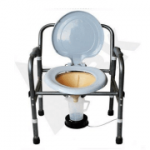Urine Leakage During Exercise
Exercise and Incontinence
You’re on your morning run, or playing tennis, or in a cardio class. Whatever you’re doing, your blood is pumping, and you’re working up a sweat. You’re crushing it!
And then it happens. You feel a little urine leak. Your concentration falters and you feel a sense of dread. Is there a restroom nearby? Will anyone notice?
Urinary incontinence while you’re exercising is pretty common, but that doesn’t make it any less inconvenient or embarrassing. The good news is that there are treatments available to resolve incontinence. You can maintain the exercise program that’s so crucial for maintaining good health.

Why do I leak urine when I exercise?
The culprit is stress urinary incontinence (SUI). Typically, the sphincter muscles in your urethra contact to keep urine in your bladder. When you urinate, these muscles relax, and urine is released.
With SUI, pressure on your bladder or urethra makes the sphincter muscles open, sometimes only momentarily, letting urine out. You might notice urine leakage when you laugh, cough, sneeze, too. That’s also considered “stress” urinary incontinence because it’s the pressure caused by movement that puts pressure on the bladder/sphincter and leads to the leakage of urine.
Other types of urinary incontinence are urge incontinence and overflow incontinence.
What can I do about stress urinary incontinence?
First, come see us. We can evaluate your symptoms and help you work out a treatment plan to offer you long-term relief. Here are some of the options:
Non-Surgical Approaches
Pelvic floor exercises and therapy
Kegel exercises are an easy way to strengthen your pelvic floor muscles. They involve squeezing and releasing these muscles several times a day. We will teach you how to do them. We might also refer you to a pelvic floor physical therapist.
Keeping your pelvic floor muscles strong is essential throughout your SUI treatment. It’s a good idea to exercise them every day.
Bladder training
This approach starts with a bladder diary. You’ll keep a log of how much and how often you drink fluids, urinate, and leak urine. With this information, we’ll work out a urination schedule. For example, you might start by urinating every hour. Gradually, you’ll increase the amount of time between bathroom visits, training your bladder to hold urine for longer periods.
Vaginal pessary (for women)
Some women have SUI due to pelvic organ prolapse, when pelvic organs, such as the bladder or uterus, drop into the vagina. A vaginal pessary is a silicone device you can place in your vagina to give these organs more support. There are several different types of pessaries. Some you can insert and take out yourself; others stay in place for up to three months. We’ll guide you through the process.
Clamp/clip device (for men)
Men can wear a special clamp on the penis that presses against the urethra and restricts urine flow. This device cannot be worn constantly, but it may help in short-term situations.
Surgical Approaches
Stress urinary incontinence can also be treated surgically. Some of your options might include:
- Slings. A sling is typically made out of a soft mesh material. In both men and women, a sling can be surgically placed under the urethra to provide support.
- Urethral injections (for women). A woman may choose to have a bulking agent injected into her urethra to thicken it and provide support. This is a short-term solution, however, and you may need to have repeat injections after a year or so.
- Burch procedure (for women). This technique is also called a bladder neck suspension or retropubic colposuspension. During this procedure, stitches are used to attach the bladder neck and urethra to surrounding abdominal tissue. This supports the urethra and sphincter muscles (the muscles that open and close the urethra).
- Artificial urinary sphincter (more common in men). An artificial sphincter is a surgically implanted device. It includes a cuff that is placed around the urethra, a reservoir placed in the abdomen, and a pump. In men, the pump is usually placed in the scrotum; in women, it is placed in the labia. The cuff is filled with fluid and keeps the urethra closed. When you need to urinate, you activate the pump. The fluid then travels from the cuff to the reservoir so that urine can be released. After a few minutes, when you’re finished urinating, the fluid flows back into the cuff to close the urethra again.

Can I still exercise with SUI?
As you can see, there are permanent solutions for urine leaks during exercise. Once you see a urologist and start taking action, you can free yourself from strategies that just hide the problem, like wearing dark clothes and using absorbent products. You’ll no longer have to plan your workout around bathroom breaks, and you’ll have more beverage options when you hydrate.
You’ll also have more choices for exercise, since you won’t be limited to low-impact workouts that put less pressure on your bladder. Instead, you’ll be able to pick other activities, try new ones, or mix and match for variety.
Don’t let incontinence keep you from staying fit. Many people stop their exercise program because of urine leaks, but physical activity is an essential part of staying healthy. Avoiding exercise can raise your risk for other health problems, like obesity and diabetes.
Remember, we are always here to answer your questions and suggest solutions. Just give us a call.
Resources
American Academy of Family Physicians (familydoctor.org)
“Bladder Training for Urinary Incontinence”
(Last updated: June 3, 2020)
https://familydoctor.org/bladder-training-urinary-incontinence/
American Urological Association
Kobashi, K.C., et al.
“Surgical Treatment of Female Stress Urinary Incontinence (SUI): AUA/SUFU Guideline”
(2017)
https://www.auanet.org/guidelines/guidelines/stress-urinary-incontinence-(sui)-guideline
European Association of Urology
“Artificial Urinary Sphincter Implantation in Women”
(Last updated: May 2021)
https://patients.uroweb.org/treatments/artificial-urinary-sphincter-implantation-women/
EverydayHealth.com
Vann, Madeline R., MPH
“Exercising With Stress Incontinence”
(September 14, 2015)
https://www.everydayhealth.com/incontinence/exercising-with-stress-incontinence.aspx
National Association for Continence
“The Best Incontinence Products for Working Out”
https://www.nafc.org/bhealth-blog/the-best-incontinence-products-for-working-out
“Don’t Quit Exercising Because of Urinary Incontinence”
https://www.nafc.org/bhealth-blog/dont-quit-exercising-because-of-urinary-incontinence
UpToDate
“Patient education: Surgery to treat stress urinary incontinence in women (The Basics)”
https://www.uptodate.com/contents/surgery-to-treat-stress-urinary-incontinence-in-women-the-basics
“Patient education: Urinary incontinence in men (The Basics)”
https://www.uptodate.com/contents/urinary-incontinence-in-men-the-basics
Urology Care Foundation
“Bladder Health Exercises”
(July 1, 2015)
https://www.urologyhealth.org/healthy-living/lifestyle-and-exercise/bladder-health-exercises
“Stress Urinary Incontinence (SUI)”
https://urologyhealth.org/urology-a-z/s/stress-urinary-incontinence-(sui)
“Stress Urinary Incontinence – What You Should Know”
https://www.urologyhealth.org/resources/incontinence-stress-urinary-incontinence-what-you-should-know







